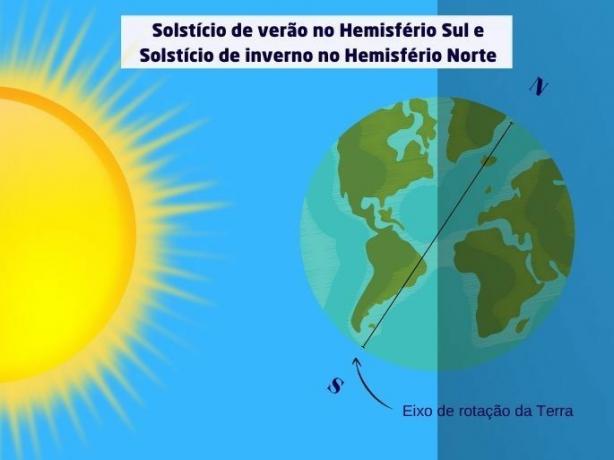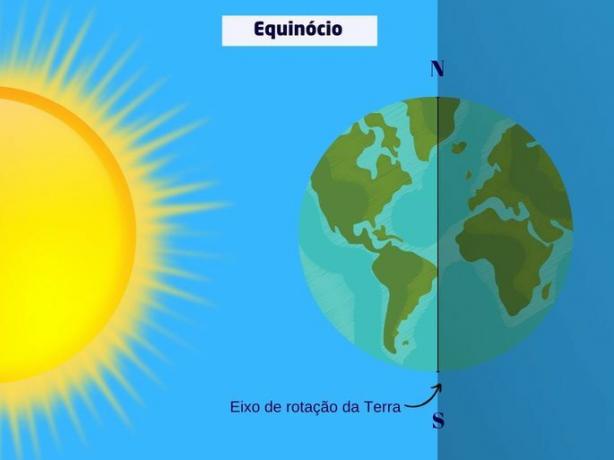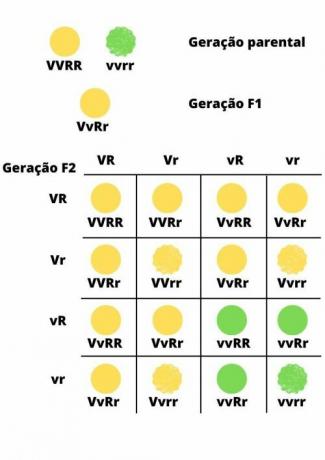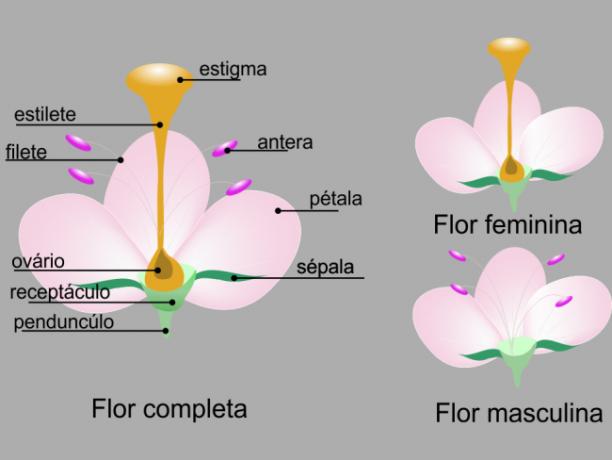solstice and equinox are astronomical events that mark the beginning of each of the four seasons of the year. The solstices mark the beginning of summer and winter. The equinoxes usher in spring and autumn.
These phenomena occur every year, always on the same dates, and are basically produced by the combination of two factors: the translation (movement of the Earth around the Sun) and the inclination of the axis of rotation of the Earth.
what is the solstice

the solstice is the moment when one of the poles (North or South) is as far as possible inclined towards the Sun. Thus, one of the hemispheres is much brighter than the other, and thus receives more heat. Another feature of the solstice is that the Sun's light rays fall perpendicularly (vertically) on one of the tropics (Cancer or Capricorn).
The summer solstice marks the beginning of summer. The winter solstice marks the beginning of winter.
When is it Summer Solstice in the Southern Hemisphere (where Brazil is), it is Winter Solstice in the Northern Hemisphere (where the United States is), and vice versa. On the summer solstice we have the longest day and shortest night of the year. The winter solstice has the shortest day and longest night of the year.
when the solstice happens
| Hemisphere | Summer Solstice | Winter Solstice |
|---|---|---|
| South (eg Brazil and Australia) | December 21st or 22nd | June 20th or 21st |
| North (eg United States and European countries) | June 20th or 21st | December 21st or 22nd |
Read more about the Solstice.
what is the equinox

on the equinox, the sun's rays fall perpendicularly on the equator. Therefore, there is balance in the distribution of luminosity between the two hemispheres.
The autumnal equinox marks the beginning of autumn. The spring equinox marks the beginning of spring.
When is it spring equinox in the Southern Hemisphere (where Brazil is), it is autumnal equinox in the Northern Hemisphere (where the United States is), and vice versa. On the spring or autumn equinox, the length of day and night is the same: 12 hours each. Equi, in Latin, means "equal", and the prefix "nocio" comes from the Latin word night ("night").
There is a curiosity about the equinoxes. From the point of view of those on Earth, there are only two days of the year when the sun rises exactly on the east cardinal point and sets at west cardinal point: at the spring equinox and at the equinox of autumn.
| Hemisphere | Spring Equinox | Autumn Equinox |
|---|---|---|
| South (eg Brazil and Australia) | September 22nd or 23rd | March 20th or 21st |
| North (eg United States and European countries) | March 20th or 21st | September 22nd or 23rd |
Read more about the Equinox.
What are the differences between the solstice and the equinox
| Solstice | Equinox |
|---|---|
| It marks the entrance of summer and winter. | It marks the entry of spring and autumn. |
| Moment when one of the poles (South or North) is at its maximum point of inclination towards the Sun. | Neither pole is tilted towards the Sun. |
| One of the hemispheres (South or North) is as far as possible facing the Sun. | Neither hemisphere is facing the Sun. |
| One of the tropics (Capricorn or Cancer) receives the sun's rays perpendicularly (vertically). | The equator receives the sun's rays perpendicularly. |
| One of the hemispheres receives more light and heat. | Both hemispheres receive the same amount of light and heat. |
| The day does not have the same length as the night. On the summer solstice we have the longest day of the year; on the winter solstice we have the shortest day. | The length of the day is the same as the length of the night: 12 hours each. |
| Occurs in the months of June and December. | Occurs in March and September. |
See too:
- What is the Summer Solstice
- What is the Winter Solstice
- What are the Tropics of Cancer and Capricorn
- What is the Autumn Equinox
- What is the Spring Equinox



